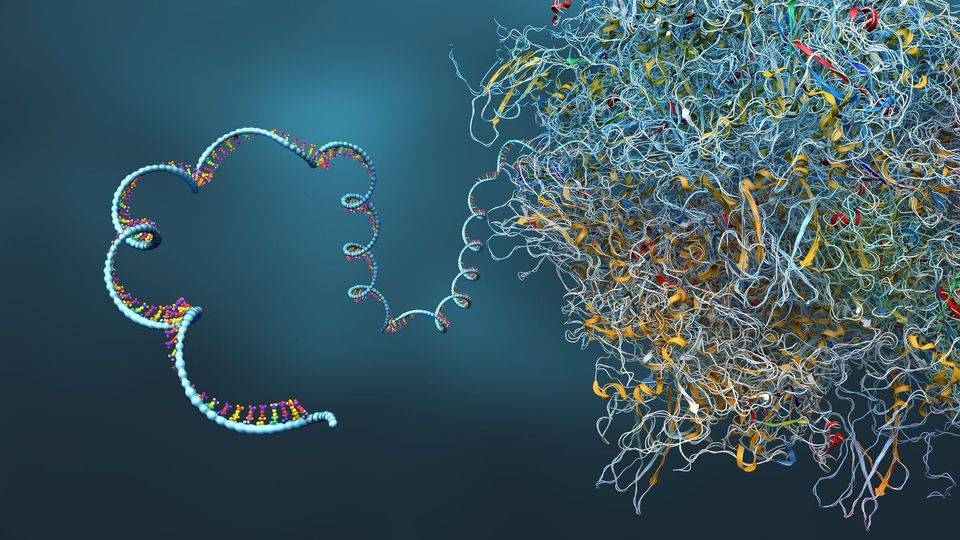Quality Control Automation for In Vitro Transcribed RNA

Complete the form below to unlock access to ALL audio articles.
Dr. Kyle Luttgeharm is a product manager at Agilent, where he works on developing methodologies and assays for Agilent’s fragment analyzer systems. Kyle will be presenting his talk “Production and Analysis of In Vitro Transcribed RNA” at the upcoming Technology Networks online symposium, Vaccine Research and Development 2022.
Technology Networks connected with Kyle ahead of the online symposium to further elaborate on his talk, discussing critical quality control analysis of in vitro transcribed (IVT) RNA products.
Roxanne Newman (RN): I'd like to start the interview by asking you more about your background. How did you come to work within vaccine research?
Kyle Luttgeharm (KL): My background is in parallel capillary gel electrophoresis, and this technique has been widely used to separate nucleic acids in the quality control (QC) step of next-generation sequencing (NGS). In 2016, Agilent recognized that there was a need to also provide high quality separation of IVT RNA. We worked with some of the top RNA therapeutic companies at the time to transition our technology into this space.
Agilent originally developed methods that allowed for the separation of IVT RNA 6000 nucleotides in size. However, by working with these companies, we realized that capacities were also needed for longer sizes of IVT RNA. We came up with alternative methods that extended the sizing range to 9000 nucleotides. All the separations are performed on the Agilent fragment analyzer systems, which is a parallel capillary electrophoresis system that can separate 12, 48 or 96 samples at a time. When the COVID-19 RNA vaccines were approved, there was a tremendous amount of new interest within IVT RNA therapeutics and vaccines. With that, we've seen a great deal more interest in our separations and the use of our instruments within this space.
RN: Can you provide further insights on what you are planning to cover in your upcoming talk at the Vaccine Research and Development 2022 online symposium?
KL: I'm going to start by discussing a little history of RNA and IVT RNA therapeutics, such as: how did we get to this place that we're in today? I’ll then move into a discussion about a generic IVT RNA workflow and a DNA vaccine workflow, and how parallel capillary electrophoresis can be used at various steps throughout this generic process for QC of the different nucleic acids.
RN: What are the quality control steps associated with RNA vaccines?
KL: When we first started working in the space, the focus was really on cancer vaccines. While that's still a focus, for some companies, we've really seen the field move more into infectious disease vaccines, with the unfortunate pandemic we all recently went through.
As far as we can tell, the steps in both workflows are really the same. You're going to start with some form of a synthetic DNA template, PCR product or a plasmid, and then you're going to use that DNA template to perform your in vitro transcription to get your RNA. Depending on how that template is constructed, you may or may not use an external polyadenylase to add a poly(A) tail and you're going to formulate that until it's a final product. Ultimately, that final product it is going to be whatever the public at large needs and goes to the local pharmacy to get. We have DNA kits and RNA kits that allow for the QC of each of these different steps so that you're sure – at each point of the workflow that you're moving through – the material is suitable for its final result.
RN: You mentioned the Agilent fragment analyzer system earlier, how does that system ensure RNA integrity and quality?
KL: We have RNA kits that have all the reagents you need to run the instrument and the fragment analyzer system then separates 12, 48 or 96 samples in parallel. It provides high-resolution separations, along with accurate sizing of that IVT RNA fragment.
The high-resolution separations, coupled with our data analysis software package, allow you to determine purity of your IVT RNA by defining the region that's the product of interest. You can also look at what else might be in there, whether there may be impurities or incomplete transcriptions or degradation. Our accurate sizing also gives a degree of confidence that the main peak that you made is actually the product of interest, that it is the right size. You can get both of these things from our platform.
In addition to Dr. Luttgeharm’s talk at the event on November 16-17, we will also be joined by other expert speakers who will cover topics such as epitope targeted vaccines for malaria, virus-like particle-based vaccines and antibody gene encoded recognition of viruses. For those of you interested in attending and joining other likeminded researchers, you can register your free place by following this link.
Dr. Kyle Luttgeharm was speaking to Roxanne Newman, Conference Team Lead for Technology Networks.



